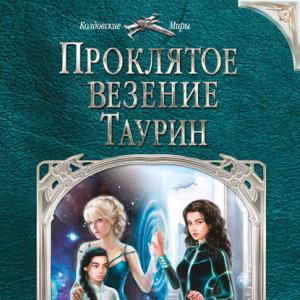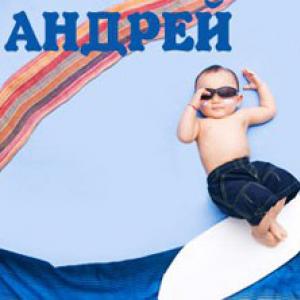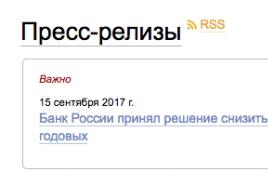Rosella parrots are all about them. Rosella. Rules for communicating with a beautiful and smart bird
One of the most popular birds that has won the hearts of many exotic lovers is the red rosella. They are attracted by the beautiful coloring, unpretentiousness, quick adaptation to a new place and a pleasant voice This small parrot is native to Australia.
Appearance
This bird is the largest of all representatives of the Rosella genus and, perhaps, the most beautiful. Torso adult covered with dark carmine plumage, on which blue wings and tail stand out with bright spots, the neck and chin are the same color. The back resembles scales. A similar impression is created by black feathers surrounded by a red border. Young rosellas are predominantly green in color. The red color is visible only on the throat, forehead and undertail. The male differs from the female in having a larger head and a wider base of the beak. The size of the birds ranges from 32 to 36 cm, almost half of which is on the tail.
Lifestyle
IN natural environment habitat, red rosella inhabits predominantly forest areas, which makes it different from others of this genus, which prefer to live in savannas and steppes. IN Lately birds can be found in gardens and city parks located on the Australian continent. They use tree hollows for nests. It is important that it be deep, and it can be located very close to the surface of the earth. For 25 days, the female incubates the eggs, while the male gets food for her during this time. Parrots love to eat apples, pears and other sweet fruits, sometimes raiding orchards. At the same time, they destroy insect pests, which brings considerable benefits.

The red rosella is a parrot that flies rather poorly. Therefore, these birds are unable to overcome long distances. They are not afraid of the cold, and rosellas can live at an altitude of 2 thousand meters throughout the winter.
For this type of parrot to live comfortably in captivity, they need to be provided with a clean, dry and spacious room (preferably an aviary), protected from drafts. This can be a large cage measuring at least 1.5 x 1 x 1 m. The bird must be able to move freely, so it must be allowed to fly around the room every day. Before this, you need to take care of safety measures - close and curtain the windows, cover all mirrors and glass, remove objects that could injure the bird. Lack of movement and constant presence in a confined space can cause various diseases and even lead to death.
Red Rosella loves to swim. To do this, place a special container with clean water. Its size should correspond to the size of the bird.

It is necessary that the room where rosellas are kept is warm and dry. Humidity should not exceed 70%. This one is capable of withstanding temperatures down to minus 10 ⁰С without consequences, while the optimal temperature is 20 ⁰С. Daytime in winter is extended with the help of additional lighting up to 18 hours a day.
Cell selection
A spacious house where the parrot will feel safe and at the same time quite comfortable is one of the most important conditions its content. The ideal option is to make an enclosure 4 meters wide. Not all owners have this opportunity, so you have to settle on choosing a cage. It is necessary to pay attention to the following points:
- The bottom of the cage should slide out. This will make it easier to maintain order within it.
- The distance between the rods is no more than 2 cm.
- No lead in the paint (this substance is very poisonous for parrots).
In the cage, you need to arrange the interior space in such a way that the red rosella feels as comfortable as possible in it. A photo of one of the options can be found in this article. A layer of calcined river sand or sawdust from deciduous trees is placed at the bottom. The drinking bowl, feeder and bathtub should be placed at a sufficient distance from each other.
A mandatory element of a parrot's house is perches. They are installed at such a distance from the rods that the bird cannot injure its tail feathers. You can use birch or oak branches as perches. Their thickness should be such that the bird can sit quietly.

Feeding
If in nature the main part of the rosella's diet consists of plant seeds and insects, then in captivity it is predominantly a grain mixture. In addition to it, they also include animal feed, vegetables, fruits, herbs, and sprouted grains. Parrots happily eat carrots, apples, cucumbers, and berries. As mineral fertilizing It is recommended to use crushed shells, eggshells, and chalk. Food is given in the form of small pieces. The norm for a parrot is 2 tablespoons per day.
A properly composed menu during the breeding period is of great importance. Every week the bird should receive animal food in the form of bloodworms, larvae, cottage cheese and milk.
What you should not feed your red rosella parrot is foods from your table - fatty, salty and smoked foods. Properly organized feeding of birds allows them to maintain their bright, beautiful coloring and produce healthy offspring.
Reproduction
Finding a mate for a parrot can be difficult. The problem is that these birds are very selective. Therefore, sometimes mating occurs between individuals of different subspecies. For example, if you cross a red and a ruby rosella, you can get variegated offspring. Mating is possible only among individuals older than one year. The nesting period lasts from October to January. A small house (25 x 25 x 40) is placed in a cage with a selected pair of rosellas, the bottom of which is covered with sawdust. The male, attracting the attention of the female, performs a mating dance. He quickly jumps on the perches, spreads his bushy tail, and strides importantly, accompanying this action with characteristic sounds.

There are usually from 4 to 8 eggs in a clutch. Both in nature and in captivity, the female incubates them. The male is engaged in protecting the nest and obtaining food. Incubation period is 25 days. The chicks are born naked and helpless, but after 5 weeks they become independent.
With good care, red rosella can live up to 20 years in captivity.
Australia is home to about 50 species of parrots, one of which is Rosella. Their peculiarity is their adaptation to life in any conditions. While other species of parrots are included in the Red Book, rosellas have learned to live in cities, inhabiting city parks. And, of course, becoming a full-fledged pet, waking up the owner in the morning with songs in a pleasant silky voice.
Rosella variegated
Characteristics of the Rosella parrot
- Parrot size – up to 35 cm;
- Weight – up to 60 grams;
- The tail is long, cascading;
- Life expectancy is up to 20 years.
The interesting color of the parrots is striking, reminiscent of fish-like scales.
 Plumage looks like scales
Plumage looks like scales Plot the color of the rosella:
- The head, chest and base of the tail are red;
- The tail and edges of the wings are blue;
- Abdomen – yellow;
- Feathers are yellow-black.
Such a bright, juicy color makes the bird very attractive for purchase among exotic lovers. There are 6 varieties of rosella in total; they differ only in plumage color and slightly in size.
Rosella doesn’t speak very well, it would be more correct to say that she doesn’t like to talk, but singing is their passion. They are distinguished by a particularly pleasant, sonorous voice.
But to learn to sing, you will need to put in some effort and a dozen patience; learning will take a lot of time.
Rosella is very aggressive towards birds other than her own species. If you have other birds at home, for example, it is better to refuse the purchase.
Purchasing a cage
Before buying a parrot, you need to purchase a cage and decide on its location.
Cell parameters:
- Width within 4 meters, depth – 1 meter, height – 1.5 meters;
- The material of the rods is unpainted metal. If there is paint, it should not contain lead;
- The distance between the rods is at least 2 cm;
- The bottom should be retractable for easy cleaning. Cover it with sawdust or clean river sand in a 1 cm layer.
 Spacious cage
Spacious cage A parrot in captivity should feel comfortable; perches, ladders, and a house should be installed. They also love to chew on things, so throw toys and twigs into the cage.
Location of the cage in the apartment
It is not enough for the cage to be comfortable; it also needs to be conveniently located in the apartment. Rosella does not tolerate dampness, the air temperature should be cool, around 20 degrees. No drafts or direct rays of the sun are allowed. If the sun hits the cage, then at least one corner of it should be in the shade, where the bird can hide.
It is noteworthy that rosellas easily tolerate cold. Even 10 degrees is not dangerous for them, and when the temperature drops, there is a chance of frostbitten fingers.
Parrot bathing
Although they don't like humidity, they love to swim. If the parrot lives with you for a long time and is completely tame, then arrange a bath right in the sink, closing the drain with a stopper. But at first it is better to install swimsuits directly in the cage.
To do this, use a small vessel slightly larger than the bird and fill it with clean water at room temperature. Keep in mind - splashes will fly in all directions! They take baths vigorously.
Buying a Rosella chick
Having prepared a home for the parrot, we go to buy a chick. You can buy it either by advertisement or in specialized nurseries and breeders.
 Young parrot
Young parrot When choosing, you need to pay attention that the chick is active, with beautiful plumage, although its color will be somewhat less bright than that of adult birds. But it's a matter of time. The age should be no more than six months; the younger the bird, the better and faster it will get used to its new home and the faster it will start talking.
The average price is from 7,000 to 10,000 rubles per parrot.
Rosella care
If not everyone, then 99% of people will want to teach a parrot to speak and sing. There are several simple rules:
- Talk to the bird, while your head and its head should be at the same level;
- Never raise your voice. Only smooth, calm, affectionate;
- Repeat relevant phrases every day. For example, wish good morning, good night, bon appetit;
- Spend as much time talking as possible, hum or whistle simple tunes.
It’s difficult to say based on the training time, it may take a month, or maybe a year, but sooner or later will he start talking, or even better, start singing.
Also, after the parrot has completely mastered it, let it fly around the apartment and stretch its wings.
 Rosella's Walk
Rosella's Walk Just close all windows and doors before doing this; rosellas, as a rule, do not return.
The bird boasts a strong immune system; diseases bypass them. If you do not reduce the body's protective functions with high humidity, poor nutrition and unsanitary conditions, then the parrot will not get sick.
Feeding the parrot
Daily poultry diet:
- Live food - bloodworms, mealworms, small insects;
- Cereals;
- Egg mixture;
- Fruits;
- Ready-made food, as in the photo below.
 Ready-made feed mixtures
Ready-made feed mixtures The daily norm is two tablespoons of food. Don't forget to change the water in the sippy cup every day.
And remember - we are responsible for those we have tamed!
Rosella parrot and coin
Photo can be enlarged
Rosella parrots- birds of medium size with a body length from 25 to 35 cm. Their characteristic feature is a wide, step-shaped tail, in which 4 central feathers are the same size, and the size of the remaining feathers varies in decreasing order on both sides of the central ones. There is a notch on the beak, near its end, and on the cheeks there is a large yellow, white or blue spot. They live mainly in Australia and only a few species live on the island of Tasmania and a number of other smaller nearby islands. Well adapted to movement on the ground, they run deftly and maneuver among herbaceous vegetation. Among the rosella species, the most common are variegated, penate, northern, pale-headed and Tasmanian rosella.
Rosella parrot - contents
These birds in nature feed on seeds of wild grasses and cultivated plants, as well as insects and various fruits. Rosellas are very popular with bird lovers and live a long time in a cage. During the acclimatization period, they are very gentle, but then they become unpretentious and feel good when fed a grain mixture with the addition of other feeds: corn at the stage of milk ripeness or soaked, various juicy fruits, berries and mealworms. When giving new food that was previously unfamiliar to them, you should start with small portions so that the birds’ digestion is not disrupted, which can even lead to their death.

Photo can be enlarged
All types of rosella feed fairly similarly, with the possible exception of the yellow-cheeked rosella. This is the smallest species in the genus, which has the weakest beak, and therefore the food available to these animals should be the smallest - millet, mogar, canary seed, etc. All rosellas must be included in the diet a large number of vitamin feed and animal feed. Some birds willingly eat mealworms, bloodworms, and egg mixture. If pets do not take the specified food, it is necessary to accustom them to this, starting with an egg mixture and gradually adding various insects, etc. Animal food is especially necessary when feeding chicks. If there is a lack of animal proteins in the diet, some Rosella parrots stop feeding the chicks or give up incubating the clutch.
When kept in captivity, all types of rosellas need fairly spacious rooms, the length of which, for some of their species, should be at least 3 - 4 m, and the width and height 1-1.5 m. This is explained by the great need of these parrots to fly . Otherwise, that is, when they are kept in cramped quarters, there are usually rarely successful cases of reproduction, and the birds themselves become less viable. In a rosella's cage there should be different perches, ladders, toys, and mirrors. More often a bird I need to let him fly in the room.
At the same time, the humidity in the room should not be too high. If there is fresh water in a container of appropriate size, Rosella parrots willingly bathe in it. A number of species of this genus of parrots are able to winter in open-air enclosures protected from the wind. True, at very low temperatures, down to - 20 ° C, frostbitten fingers are possible. Temperatures down to -10 C can be tolerated without significant consequences.

Photo can be enlarged
Rosella parrot - domestication
Overall, taming rosella is not difficult. These birds are friendly towards people and try to please them. However, there are a number of problems that are a consequence of the bird’s fairly developed intelligence - they try to study everything around them, so they can end up in a life-threatening situation. That is why caring for a Rosella parrot should include cleaning up all dangerous objects when the pet walks around the room.
It is not recommended to own these birds for those who have not yet dealt with parrots. The fact is that rosellas, which are accustomed to communication, can no longer go without human attention for a long time. If your pet is left alone, he will make loud noises or damage your things. Rosellas should always have something to chew on, otherwise furniture, books, and even your shoes will suffer. Regarding keeping rosellas with others pets, then they get along quite normally with cats and dogs, preferring to ignore each other.
However, in one cage contain rosella and

Photo can be enlarged
Rosellas are generally difficult to breed in captivity. The male and female have almost the same coloring, and the brightly colored individual is not always a male, and the paler colored one is a female, so very often an amateur keeps birds of the same sex and is not successful. However, if the pair is successfully selected, the mating of the birds is successful, and after the female lays her eggs, they diligently incubate them and together feed the chicks until they fly out of the nest.
Rosellas willingly feed other people's chicks, and therefore many of them can be used as foster parents. For breeding, one pair of these parrots is left in the aviary. Sometimes, if the room is sufficiently large, other species of parrots, unrelated, for example, or, are added to them. A house measuring 25x25x40 cm or 30x30x45 cm, depending on the size of the birds, is suitable as a nesting site. A nesting house of 22x22x30 cm is suitable for the yellow-cheeked rosella. The diameter of the entrance for all types of rosella is at least 8 cm. A layer of sawdust or a mixture of sawdust and peat, wood dust, etc. can be used as bedding.

Photo can be enlarged
A clutch usually contains 4 - 6, occasionally 7 - 8 eggs. U individual species Roselle egg shell color is cream. Incubation lasts 20 - 22 days. The chicks hatch covered with thick down and are blind. In the first days they are fed mainly by the female, later by both parents. At the age of 28-35 days, the chicks leave the nest, but their parents take care of them for another 2 - 3 weeks. The chicks are mostly similar in color to their parents, but are duller in color. They usually put on adult attire in the second year of life.
Sexual maturity is reached at 15 - 18 months. These birds usually nest 2 times a year.
Let us briefly consider the varieties of this bird. Lives in northeastern Australia: Queensland and New South Wales. Body length 30-33 cm, tail 14-17 cm. The upper part of the back has black plumage with a yellow border. The color of the head is light yellow, the cheeks are white. The lower back, most of the wings and rump are blue or greenish-blue, the undertail is red. The belly is pale yellow in color with a bluish or reddish tint.

Photo can be enlarged
The middle tail feathers are greenish-blue, the outer ones blue color. Tree trunks, hollows of thick branches and other shelters serve as nests. The female lays 3-6, sometimes 8 white eggs with an interval of 1-2 days. Incubation lasts 22-24 days. After 33-40 days, the feathered chicks fly out of the nest. This is one of the best known species and is easy to keep in captivity.
Yellow-bellied rosella V natural conditions lives on the island of Tasmania and Australia.
Body length 34-36 cm, tail 15-17 cm. Color has many different tones and shades. Some have a brown upper body with a blue border. The neck, chest and crown are yellow-green, and the throat is blue. The forehead is red. Others have a bright yellow neck, head, and abdomen. The forehead is also red, and the shoulders are black and brown with a green border. Males are slightly larger than females; females have a less intense throat color with an orange tint. Parrots are very resistant to low temperatures; they can be kept all year round in garden aviaries in the open air, which should have closed rooms where parrots can hide from bad weather. At home, these Rosella parrots behave calmly and quickly become tamed. They are very peaceful towards other calm parrots. They breed well in captivity.

Photo can be enlarged
At the age of two years they are capable of reproduction. The female lays 5 eggs and incubates them; after three weeks, blind chicks hatch.
Body length 34-36 cm, tail 15-17 cm. The color of the plumage has many different tones and shades. Some have a brown upper body with a blue border. The neck, chest and crown are yellow-green, and the throat is blue. The forehead is red. Others have a bright yellow neck, head, and abdomen.

Photo can be enlarged
The forehead is also red, and the shoulders are black-brown with a green border.
The smallest of all rosellas, body length 27-28 cm, tail 14 cm. The color of the plumage is red, black and yellow.

Photo can be enlarged
The cheeks are light yellow or yellow, for which the parrot got its name. The feathers on the upper back are black, edged with red, green and yellow, and the feathers on the lower back are green. There is a blue stripe along the edges of the wing. The neck, head, crop and abdomen, including the undertail, are bright red. The female is noticeably different from the male. All her colors are paler, and instead of red they are orange or brick, her cheeks are dirty yellow. The upper part of the body is brown-green, the streaks are not as clearly defined as those of the male. It lives in the east and south of Australia and adjacent islands. Although large flocks of rosellas cause damage when they come to feed in crop fields, people do not pursue them. There are 4-6 white eggs in a clutch. Incubation lasts 22-24 days. The male feeds the female at this time. The chicks stay in the nest for 30-35 days, after which they leave it, but their parents take care of and feed them for another 2-3 weeks. Easily tamed, has a peaceful, calm character. It reproduces more easily in captivity than other rosellas. There are 3 subspecies of these parrots that inhabit the southeastern part of Australia and the island of Tasmania. They are distributed in the southeast of Australia and the island of Tasmania. This is a small parrot, about the size of a thrush.
The body length is 32 cm, and the wing is about 11 cm. These birds have beautiful plumage. The upper side of the back is black, but each feather is edged with green-yellow color, Bottom part, bee-eaters, located in steep clayey banks; they even nest on poles and fences.

Photo can be enlarged
These parrots can be kept both at home and in zoo corners of schools, kindergartens in spacious cages or enclosures. They quickly get used to humans, behave calmly, are not loud, but can be aggressive towards other birds, so it is better to keep them separately from them. These parrots love to bathe; to do this, they need to put water in wide baths 2-3 cm deep. Food for variegated rosella parrots - all types of grain feed, fruits and vegetables, various greens. It is very good to periodically give them several pieces of mealworms, and while feeding the chicks every day and every more. During this period, you need to regularly give egg food, White bread, soaked in milk, as well as more greens.
The best food
during reproduction, these are semi-ripe panicles of millet, canary seed, panicles of various weeds and ears of corn. You can feed them a grain mixture of millet, oats, wheat with a small amount of hemp. Grain can be given dry or sprouted. They also love pine nuts, rowan berries and fruits, as well as greens and willow branches. During the nesting period, ant eggs should be added to soft food; they also need mineral supplements. Variegated rosella is an inhabitant of open spaces. In its homeland, it is one of the most common birds. With equal success, rosellas settle in savannas, large parks, and places with intense human activity. They feed on fruits and seeds of wild plants and agricultural crops. Despite the last factor, Rosella parrots are not persecuted by people, since they feed on weed seeds and small insects for most of the year.
Rosella has been known to mankind for more than two hundred years. Natural habitat is Australia. However, the birds also thrive on the European continent. This is a species that is distinguished by its small size - on average, the body length of a parrot is 30-35 cm, and its weight is about 60 g.
Appearance of the Rosella parrot
Rosella looks simply amazing. She has a bright, bushy and long tail. Body color can be very different - there are dozens of variations in nature. Mostly this is a combination of red, yellow, black and blue colors. Considered the most popular motley Rosella- due to the unusualness and richness of its color.
It should be noted that this bird is very peculiar. She does not have the most flexible character, which is expressed in absolute intolerance towards other birds. She will not tolerate any competition. Therefore, she should be in splendid isolation in the house. This determines the fact that you need to find an appropriate approach to Rosella, and this is very important, both for you and for the parrot itself.
A bird of this species can live either a short life, about 10 years, or a very long life, which is about 30 years.
Life expectancy directly depends on proper nutrition and proper place of residence. Therefore, the owner will need to take care of this and carefully study the principles of proper care for a motley parrot.
That long-awaited moment has arrived, and the beautiful bird has become a new member of your family. Now everything will depend on you. For any animal, not just parrots, a sudden change of environment is a serious stress. Therefore, initially it is necessary to allow the bird to adapt to its new living conditions. This period lasts approximately a month. During this time, it is better not to burden the beautiful bird with your unbridled attention. Be sure to explain this to your children and follow this rule yourself.
After a month, you can start talking to Rosella. Do this in a soft and kind voice - birds are very sensitive to intonation. Develop the habit of getting up early to feed your new pet a hearty breakfast - he will definitely appreciate it, becoming more and more attached to you. You can start from this period.
After a month, if the bird is kept in a cage, it can be released to walk around the house. It should be remembered that Rosellas are very inquisitive - they can climb into cozy places, for example, behind furniture, into some boxes, vases, etc. Therefore, you first need to make sure that there are no objects in the house that are dangerous to the animal.
Rosella must be tamed gradually and try not to scare
This type of parrot loves increased attention to its individual. If it is not enough, the bird will begin to scream and damage objects in the cage or in the apartment - depending on where it is. So you will have to devote enough time to it. If you still don’t have one, don’t be lazy to buy a pair for your pet - it will make him much more fun.
Needed here A complex approach. Therefore, it is advisable to divide this process into several activities so that you clearly understand what is required of you.
There must be a cage, absolutely. In this case, it is advisable to buy real bird apartments, and not a prison. The cage should be as spacious as possible - up to several meters in length or width. The rods should not be painted - the fact is that many paints contain heavy metals, such as lead. The parrot will chew them and, accordingly, poison enters its body.
The bottom of the cage should be retractable - this will make it much easier to clean. You need to put sawdust on the bottom. If they are not there, clean sand will do.
Rosella, as mentioned above, is a very active bird. Do not skimp on decorating her cage - install various mirrors, perches, ladders and other elements that the animal will use for fun games.
Rosella in a cage
Pay special attention to the location of the cage:
- it should be located in a well-lit and (this is important!) habitable room, for example, in an adult’s bedroom or in a nursery;
- however, it is strictly not recommended to place the cage under sun rays on an ongoing basis. One to two hours of sunbathing per day will be enough, after which the cage should be removed from the sun;
- there should be no drafts in the place where the cage is located;
- a very important requirement is humidity environment. Rosella is very sensitive to dampness or, conversely, increased dry air. Therefore, humidity should be optimal - approximately 60-70 percent.
It is very important for this bird to stretch its wings from time to time. Therefore, regularly release her from “imprisonment” - at least once every few days. Thanks to this, the parrot's mood will improve significantly.
Nutrition
This is one of the most important aspects of proper maintenance and care of Rosella. Before you develop a diet for your pet, you must take into account a number of third-party factors:
- type of poultry keeping - aviary or cage;
- duration of a sunny day;
- temperature, humidity and ambient light level.
All this directly affects the composition, quantity and diet. If you are having difficulty developing an optimal diet, you can seek help from specialized specialists. In general, it is advisable to find out how and what to feed your parrot from the seller, especially if it is a nursery.
Rosella is practically omnivorous. She can eat both grass and small worms. In specialized pet stores you can purchase complex cereal-based mixtures that contain the optimal amount of fats, carbohydrates, proteins, vitamins and minerals, that is, everything that is so important for the health of a motley pet.
Grain feed mixture for parrots
But this does not mean that you should feed your parrot only these mixtures. Be sure to add foods to your diet that are also in your kitchen:
- Almost anything can be given from fruits - apples, pears, plums, bananas, pomegranates and much more;
- feed from time to time boiled peas and walnuts;
- Rosella is very good with vegetables, especially if they are pre-cooked;
- when spring and summer come, pay attention to adding fresh herbs to your diet - parsley, dill, celery, nettles, ordinary grass, young tree shoots, etc.;
- add boiled eggs, eggshells, shellfish, grains, white bread, even slaked lime to your diet.
A parrot must receive a comprehensive diet, which includes all the products that the bird seeks in the wild. Otherwise you will notice very quickly Negative consequences from improper nutrition - Rosella will become lethargic, the color will fade, and feathers may begin to fall out. In the end, the bird will get sick, and this is already very dangerous. Lack of essential microelements can lead to dire consequences. For example, females that lack calcium may eat their own eggs.
Bathing
Rosella, like other birds, loves to preen itself. But this does not mean that the parrot does not need to be bathed from time to time. Of course, this does not mean that you need to run a bath, use different shampoos, etc. It will be enough to let the bird out of the cage and open the tap in the kitchen or bathroom - it will definitely fly there to take water treatments.
Here are a few practical advice that will help you find mutual language with a feathered pet and, accordingly, facilitate the process of caring for it:
- This type of parrot is highly recommended for those who have previously had experience in keeping birds at home. Otherwise, it will frankly be difficult for you;
- if you have already tamed the bird, you will have to give it appropriate attention. Surprisingly, Rosellas are very vindictive - if you forget about them, they will “remind” you of their existence very much. in an original way– damage to furniture, books, loss of small items, etc., that is, they will do dirty tricks;
- Thanks to its natural curiosity, the parrot constantly strives to explore new territories. Therefore, it is advisable to limit its habitat to the cage and the room where it is located. At the same time, be sure to remove all objects dangerous to the animal, especially sharp and small ones that it can swallow;
- Compared to other parrots, especially parrots, Rosella is quite large. Considering the fact that she does not tolerate such a neighborhood, this can end very sadly for the baby - be sure to remember this;
- This type of parrot gets along well with cats and dogs. In fact, they do not pay the slightest attention to each other. Dogs are not aggressive towards many representatives of flying fauna, and cats understand that they will receive one hundred percent rebuff.
Rosella can be a real gift for a family. This is a very smart, beautiful and inquisitive bird. Proper care keeping track of it is very important, since the parrot’s life expectancy, its condition, mood and appearance directly depend on it.
rosella parrots
Rosella parrots are inhabitants of distant Australia. But today these bright beautiful birds can be found in our latitudes - today, keeping rosella parrots at home has become popular among Russian parrot lovers, who are happy to keep rosellas.
rosella parrots
Rosella variegated
Variegated rosellas- these parrots have an interesting difference from other parrots. Rosella's feather has a scaly color. They have a wide, long tail and a strongly rounded beak. The homeland of these parrots is Australia and about. Tasmania.
Price: 7,000 rub.

Ruby rosella
These parrots should be fed grain feed, some of which are best given soaked. It is also necessary to include fruits, berries and various greens in their diet. In captivity they live 20 years or more.
Price: 8,000 rub.
Red Rosella
It is not surprising that this species, found on the east coast of Australia, has become one of the most common parrot species. Its beautiful plumage is characterized by an unusual, eye-catching contrast of crimson-red areas of the plumage with black and blue. In appearance, young individuals are very different from adults: their plumage is predominantly green.
Price: 9,000 rub.
Birds of this species are not as bright as other Rosellas, but they still have attractive colors. They are distinguished by a pale yellow head, black wing feathers edged with yellow, and bluish underparts. It is difficult to determine sex by appearance, although adult females have a stripe on the underside of their wings. Pale-headed rosellas live up to 25 years.
Price: out of stock
Yellow-cheeked rosella
This is the smallest and most susceptible to learning representative of the genus. The plumage of these rosellas is not only beautiful, but also allows you to determine the sex of the bird by appearance. In nature, these rosellas inhabit the outskirts of the southwestern continent.
Price: out of stock
Green Rosella
These largest representatives of the genus are sometimes called Tasmanian rosellas, as they are not found in mainland Australia. Green rosellas resemble yellow ones, but their plumage is much darker, especially on the wings. The females of these parrots can be identified by small patches of orange-red plumage near the throat.
Price: out of stock
These parrots have a common color scheme with a predominant yellow plumage. The spots on their cheeks are bluish, with a red stripe running above the cere. Females and males are colored the same. In nature, it lives in southeastern Australia, far from the coast.
Price: out of stock
Such parrots are rarely found outside of Australia. They can be recognized by their black head, white cheeks and yellowish underparts.
Price: out of stock
How to care for rosellas? What to feed these parrots?
Rosellas grow from 25 to 35 cm in length, have an average lifespan of 20-25 years in captivity, and are characterized by a wide stepped tail with four central feathers of equal size. There is a large white, yellow or blue spot on the cheeks of rosellas, and there is a notch on the beak.
If buy a rosella parrot chicks or at a fairly young age, they quickly and happily get used to the new conditions of detention and the new owner. These parrots make noise quite rarely and can calmly learn a few simple words. It is not recommended to keep Rosella parrots with other types of parrots, since Rosella parrots may not be very friendly towards other birds.
The main diet of the Rosella parrot consists of seeds of various herbs. A regular grain mixture for medium-sized parrots is suitable for them - this is the basis of the diet. Additionally, rosellas are fed with fresh herbs, vegetables and fruits. From time to time, animal food is also added to the diet, for example, chopped chicken eggs, cottage cheese, milk, pupae and insect larvae. Rosella also needs calcium and phosphorus - these elements are contained in crushed shell rock and eggshells. The rate of grain mixture per day for rosella is 2-3 tablespoons. Some of the food can be given to rosellas in a soaked form.
Rosella parrots They do not tolerate dampness well, so they need to be kept in fairly dry rooms, with a relative air humidity of 50-70%. These birds should have the opportunity to sunbathe or hide in the shade - as they wish. The rooms in which rosellas are kept should be well ventilated, and the optimal temperature for rosellas is 20-22°C. In winter, birds may need to artificially increase the duration daylight hours(up to 16-18 hours), so you also need to take care of the lighting.
It is best to keep rosellas in spacious enclosures, but if there is not enough free space, you can use cages to keep rosellas. The minimum size of the cage is preferably at least 150x70x70 cm. It is recommended to use a cage with a retractable bottom - this way it is more convenient to clean the cage, and the bird will not have to be disturbed too often. The cage tray is covered with sawdust or clean river sand.
The distance between the bars of the cage should be about 2 cm. It is important to make sure when choosing a cage for parrots that it is not painted with paints containing lead. Lead is a poison for birds.
In the cage for rosell parrots Perches are installed. Their diameter should be such that the rosellas cannot completely cover them with their toes. It is best to make perches from straight, even, bark-free twigs of oak, birch, and beech. The perches are fixed at a certain distance from the grating so that the rosellas do not touch the grating with their tail. It is good to place the perches so that the bird has to flap its wings several times to move between them - such a “warm-up” is necessary for a parrot.
Rosella parrots they love to swim, so in addition to the feeder and drinking bowl, which by the way are not recommended to be placed too close to each other, a bathing suit should also be placed in the rosella cage - a container about 20 cm in diameter, filled almost to the brim with water. Feeders and drinkers are usually made hanging. The cage is cleaned when it gets dirty, the feeders and drinking bowls are washed hot water after use.







